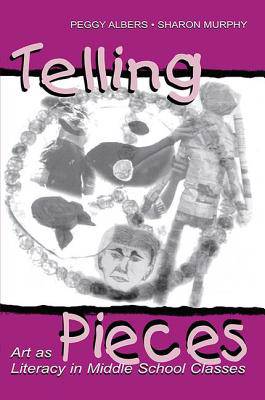
- Retrait gratuit dans votre magasin Club
- 7.000.000 titres dans notre catalogue
- Payer en toute sécurité
- Toujours un magasin près de chez vous
- Retrait gratuit dans votre magasin Club
- 7.000.0000 titres dans notre catalogue
- Payer en toute sécurité
- Toujours un magasin près de chez vous
256,95 €
+ 513 points
Format
Description
Telling Pieces is an exploration of how pre-adolescent middle-school children develop a knowledge and understanding of the conventions of art (art as literacy) and how they use this knowledge to create representations of their lives in a small midwestern U.S. town. Beginning with an overview of social semiotics and emergent literacy theorizing, the authors set the stage for their study of sixth graders involved in art. A galleria of children's artworks is presented, allowing readers/viewers to consider these texts independent of the authors' interpretations of them. Then, set against the galleria is the story of the community and school contexts in which the artworks are produced--contexts in which racism, homophobia, and the repression of creativity are often the norm. The interpretation the authors bring to bear on the artworks reveals stories that the artworks may or may not tell on their own. But the tales of artistic literacy achievement are counterbalanced by reflection about the content of the artworks produced, because the artworks reveal the impossibility for students to imagine beyond the situational bounds of racism, homophobia, and religiosity. The authors conclude by raising questions about the kinds of conditions that make literacy in art possible. In doing so, they explore selected alternative models and, in addition, ask readers to consider the implications of the ideological issues underlying teaching children how to represent their ideas. They also advocate for a participatory pedagogy of possibility founded on ethical relational principles in the creation and interpretation of visual text. Of particular interest to school professionals, researchers, and graduate students in literacy or art education, this pioneering book: brings together the fields of art education and literacy education through its focus on how middle school students come to work with and understand the semiotic systems, introduces sociolin
Spécifications
Parties prenantes
- Auteur(s) :
- Editeur:
Contenu
- Nombre de pages :
- 280
- Langue:
- Anglais
Caractéristiques
- EAN:
- 9781138423404
- Date de parution :
- 11-07-17
- Format:
- Livre relié
- Format numérique:
- Genaaid
- Dimensions :
- 152 mm x 229 mm
- Poids :
- 452 g

Les avis
Nous publions uniquement les avis qui respectent les conditions requises. Consultez nos conditions pour les avis.






